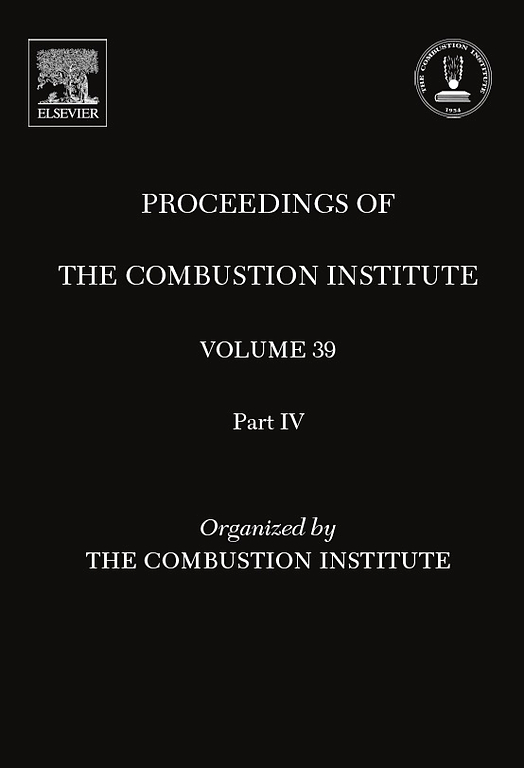富氢火焰热扩散不稳定性的实验标记
IF 5.2
2区 工程技术
Q2 ENERGY & FUELS
引用次数: 0
摘要
使用 OH 平面激光诱导荧光(PLIF)研究了低湍流条件下本生灯中富含氢气的甲烷-空气火焰的结构。在相同的非拉伸层流火焰速度和湍流条件下,对三种火焰进行了研究,同时氢气富集度按体积变化高达 70%。随着氢气的添加,火焰的整体消耗速度增加,其原因是火焰表面积增大,以及沿火焰表面的化学计量因差异扩散而发生波动。沿火焰前沿的 OH-PLIF 强度梯度很好地捕捉到了这些波动,因此它被确定为热扩散不稳定性的一个有希望的实验标记。在此首次对其与曲率的相关性进行了实验研究。在没有氢的情况下,没有发现相关性,而随着氢的富集,相关性越来越正,这与贫氢空气火焰直接数值模拟(DNS)中局部燃料消耗的行为一致。这凸显了氢氧强度梯度大小作为热扩散不稳定性标志的潜力,以及实验中无法获得的局部燃料消耗速度的潜在替代物。本文章由计算机程序翻译,如有差异,请以英文原文为准。
An experimental marker of thermo-diffusive instability in hydrogen-enriched flames
The structure of hydrogen-enriched methane-air flames in a Bunsen burner at low turbulence is investigated using OH planar laser-induced fluorescence (PLIF). Three flames are investigated at identical unstretched laminar flame speeds and turbulence conditions, while hydrogen enrichment is varied up to 70% by volume. An increase in global flame consumption speed is recorded with hydrogen addition, and is attributed to both an increase in flame surface area and fluctuations in stoichiometry along the flame surface as a result of differential diffusion. These fluctuations are found to be well-captured by the gradient of OH-PLIF intensity along the flame front and it is hence identified as a promising experimentally-accessible marker of thermo-diffusive instability. Its correlation with curvature is hereby examined for the first time experimentally. No correlations are found in absence of hydrogen, while increasingly positive correlations are recorded with hydrogen enrichment, consistent with the behavior of local fuel consumption in direct numerical simulations (DNS) of lean hydrogen-air flames. This highlights the potential of OH intensity gradient magnitudes as a marker of thermo-diffusive instability, and a potential surrogate for local fuel consumption speed which is inaccessible experimentally.
求助全文
通过发布文献求助,成功后即可免费获取论文全文。
去求助
来源期刊

Proceedings of the Combustion Institute
工程技术-工程:化工
CiteScore
7.00
自引率
0.00%
发文量
420
审稿时长
3.0 months
期刊介绍:
The Proceedings of the Combustion Institute contains forefront contributions in fundamentals and applications of combustion science. For more than 50 years, the Combustion Institute has served as the peak international society for dissemination of scientific and technical research in the combustion field. In addition to author submissions, the Proceedings of the Combustion Institute includes the Institute''s prestigious invited strategic and topical reviews that represent indispensable resources for emergent research in the field. All papers are subjected to rigorous peer review.
Research papers and invited topical reviews; Reaction Kinetics; Soot, PAH, and other large molecules; Diagnostics; Laminar Flames; Turbulent Flames; Heterogeneous Combustion; Spray and Droplet Combustion; Detonations, Explosions & Supersonic Combustion; Fire Research; Stationary Combustion Systems; IC Engine and Gas Turbine Combustion; New Technology Concepts
The electronic version of Proceedings of the Combustion Institute contains supplemental material such as reaction mechanisms, illustrating movies, and other data.
 求助内容:
求助内容: 应助结果提醒方式:
应助结果提醒方式:


